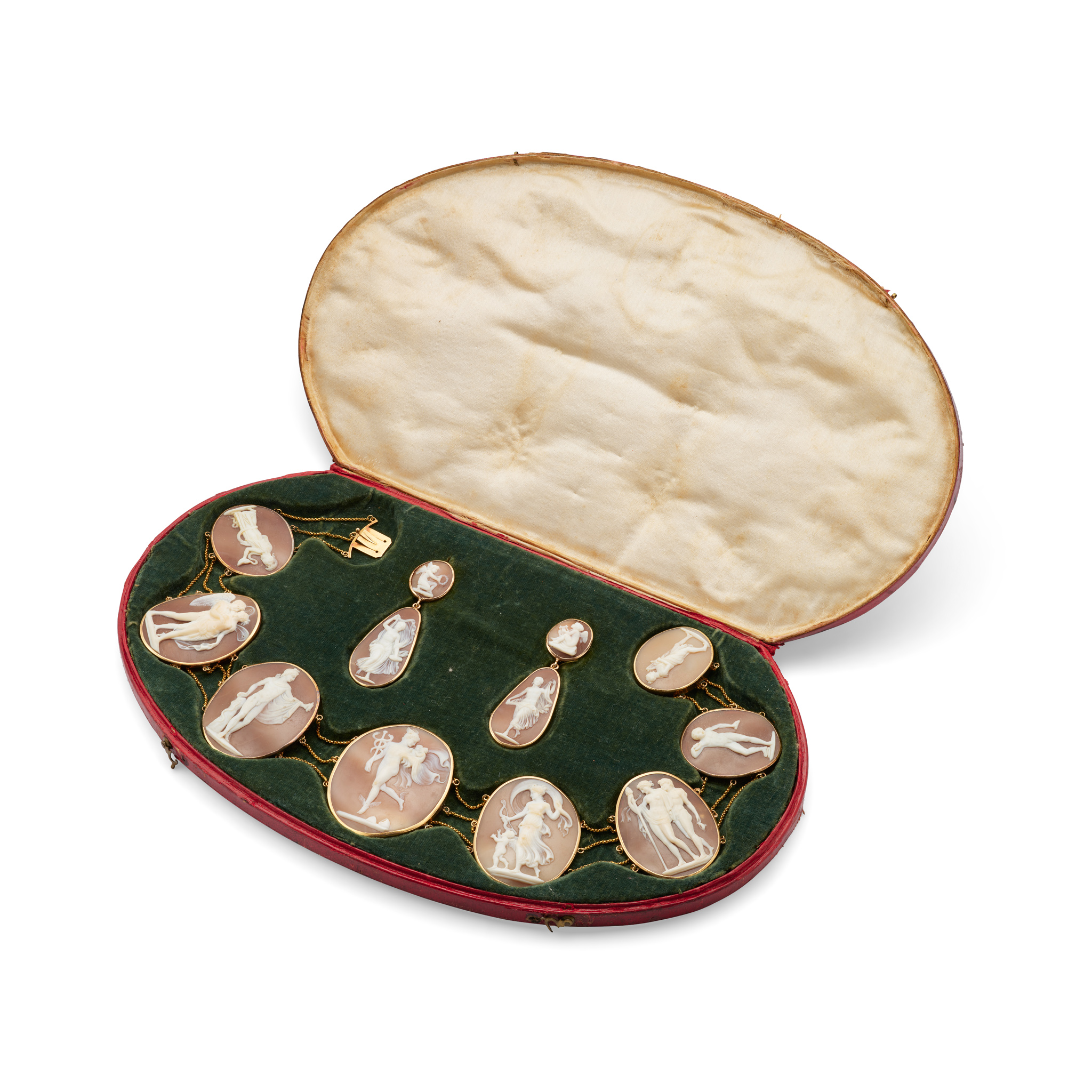An early 19th century cameo necklace and earring suite
£4,536
Auction: 09 April 2025 from 14:00 BST
Description
The graduated collet-set oval shell cameos, depicting figures from Classical mythology including Venus and Cupid, Hermes holding a caduceus and twin babies, the goddess Hygieia and a discus player, linked by triple chain connectors, pendent earrings en suite depicting the muses, largest cameo 4.8 x 3.8cm, lengths: necklace shortest strand 42.7cm, earring 6.1cm, fitted case (2)
Footnote
The interest in cameos was burgeoning in the 17th and 18th centuries and came to its apex during the Napoleonic period (1799-1815). These decades saw yet another revival of classical antiquity largely pushed by the political transformation of France into an empire. Educated members of society displayed an outward appreciation for the classics, notably the Roman Empire, through cultural and aesthetic choices.
While in proceeding centuries the study of cameos had been predominantly a male-dominated interest, the late 18th to early 19th century saw the integration of these classical themes, including in cameos, into women's dress and jewellery fashion. This necklace for instance has a heavily female theme in the nature of the mythological figures and scenes represented. Despite the Napoleonic Wars, this classical revival made its way to Britain, in part driven by the Empress Joséphine (1763-1814), widely regarded as a source of fashionable inspiration across Europe.
As a portable sculpture or portrait, cameos offered an intersection of culture and tourism meaning well travelled Victorians could buy jewellery souvenirs and through personal adornment demonstrate their erudition.

